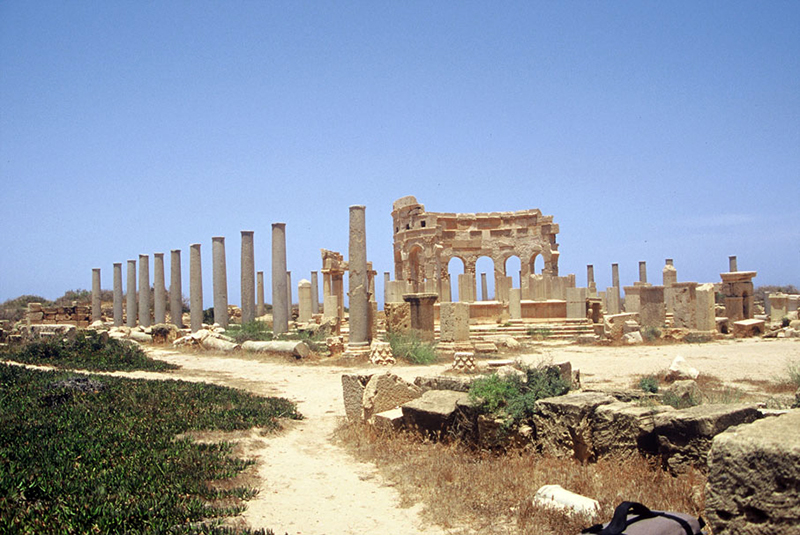Digital Epigraphy: Phoenician-Punic minor inscriptions. An example of an online database
Abstract
Inscriptions so called minor due to their everyday nature, created ante o post cocturam on clay and ceramics offer heterogeneous examples of the use of writing. Their cataloguing in an online database offers a publication of many testimonies, dispersed by area and / or by chronological point of view. Examples of “transversal” material culture are presented between the Phoenician and Punic world and the classical Greek and Roman world. The interactions in the different cultural areas can be analyzed from the point of view of writing, graphic support or onomastics. This preliminary contribution presents a brief overview of the problem, which deserves further investigation.References
Amadasi Guzzo M.G. (1995), More on the Latin Personal Names Ending with –us and –ius in Punic, in Solving Riddles and Untying Knots, Biblical, Epigraphic, and Semitic Studies in Honor of J.C. Greenfield, Zevit Z., Gitin S., Sokoloff M. [eds], Winona Lake : Eisenbrauns, 495-504.
Aranegui Gascó C. (2002), Las ánforas con la marca MAGON, in Vivre, produire et échanger: reflets méditerranéens : Mélanges offerts à Bernard Liou, Rivet L., Sciallano M. [eds], Montagnac : Mergoil, 409-416.
Benz F.L., (1972), Personal names in the Phoenician and Punic inscriptions, Studia Pohl 8, Roma : Biblical Institute Press.
Cavaliere P., Piacentini D. (2016), Bolli punici su anfore. Proposta per la creazione di un Corpus, in III Congreso Internacional de la Sociedad de Estudios de la Cerámica Antigua (SECAH) - Ex Officina Hispana (Tarragona, 10-13 de diciembre de 2014), Járrega R., Berni P. [eds], Tarragona : La Ergastula Ediciones, 616-623.
Cavaliere P., Piacentini D. (2019), Sicilia occidentale. Materiale da costruzione bollato e antroponimi punici in lettere greche?, Bonetto J., Bukowiecki E., Volpe R. [eds], Laterizio romano. Nascita e diffusione del mattone cotto nel Mediterraneo tra IV e I secolo a.C., Atti del II Convegno Internazionale “Laterizio” (Padova, 26-28 Aprile 2016), Roma : Edizioni Quasar di S. Tognon, 271-273.
Cavaliere P., Piacentini D. (c.d.s.), Scrittura su Argilla e Ceramica 2.0. Un Database per il Corpus delle iscrizioni fenicio-puniche, in IX Congreso International de estudios fenicios y púnicos (Mérida, 22 octubre - 26 octubre 2018).
González Fernández R., Belmonte Marín J. A., Marín Muñoz J. M. (2014), C. Cornelius C. F. Sedbal, Nuevo ejemplo de antroponimia fenicio-púnica en Carthago Nova, CuPAUAM 40, 97-109.
Ibba A. (2016), Sardi, Sardo-punici e Italici nella Sardinia repubblicana: la testimonianza delle iscrizioni, in Il processo di romanizzazione della provincia Sardinia et Corsica, Atti del Convegno Internazionale di studi (Cuglieri (OR) 26-28 marzo 2015), De Vincenzo S., Blasetti Fantauzzi C. [eds], Analysis Archaeologica. An International Journal of Western Mediterranean Archaeology. Monograph Series N. 1, Roma : Quasar di S. Tognon, 69-88.
Lagóstena Barrios L. G. (2004), Las ánforas salsarias de Baetica. Consideraciones sobre sus elementos epigráficos, in Epigrafía Anfórica. Proyecto Amphorae. Workshop (Barcelona, 9-10 mayo 2003), R. Rodríguez [ed], Collecció Instrumenta 17, Barcelona : Publicacions I Edicions de la Universitat de Barcelona, 197-219.
Pfahl S.F. (2017), Ein neo-punischer Graffito und eine numidische Münze aus Oberhausen bei Augsburg, Archäologisches Korrespondenzblatt Jahrgang 47, Heft 4, 501-511.
Ramón Torres J. (1995) Las Anforas fenicio-púnicas del Mediterráneo central y occidental, Collecció Instrumenta 1, Barcelona : Edicions Universitat De Barcelona.
Sáez Romero A. M. (2008), La producción cerámica en Gadir en época tardopúnica (siglos -III/-I), BAR International Series 1812, Oxford.
Copyright (c) 2019 Paola Cavaliere, Danila Piacentini

This work is licensed under a Creative Commons Attribution-NoDerivatives 4.0 International License.
CaSteR is published under a Creative Commons Attribution-No Derivatives Licence 4.0 (CC-BY-ND). With the licence CC-BY-ND, authors retain the copyright, allowing anyone to download and share copy and redistribute the material in any medium or format. The work must be properly attributed to its author. It should be also mentioned that the work has been first published by the journal CaSteR.
Having published these contributions for the first time, CaSteR will have the right to publish them integrally or partially as reprints or possibly as part of a thematic issue, in both digital and printed format.
It is not necessary to ask further permissions both to author or the journal.








